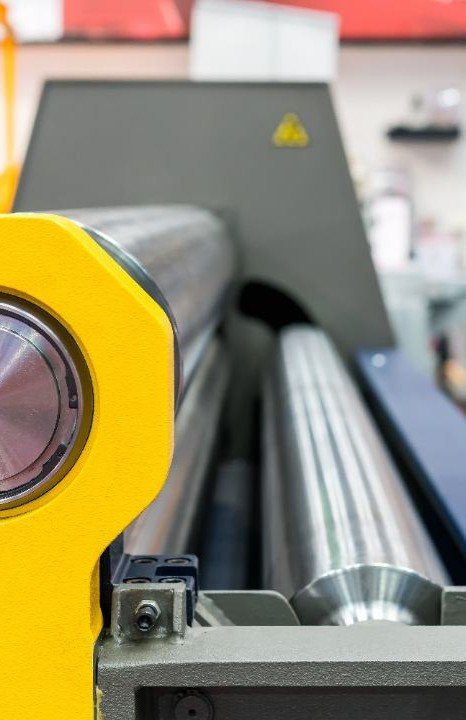Rolling of Sheet Metal
Rolling of Sheet Metal – Precision and Efficiency in Metalworking
The rolling of sheet metal is an essential process in metalworking that allows flat metal sheets to be formed into round or cylindrical shapes. This technique plays a significant role in many industries, particularly in the production of pipes, tanks, containers, cylinders, and other cylindrical components. The ability to roll metal sheets precisely and uniformly is crucial for producing high-quality products that meet both functional and aesthetic requirements.
What is Sheet Metal Rolling?
Sheet metal rolling is a forming process where a flat sheet is mechanically bent into a round or cylindrical shape. This process is typically done by bending the sheet over a roller or using specialized rolling machines. These machines apply even pressure to the sheet, bending it along a specific axis until the desired curvature is achieved.
There are various methods of sheet metal rolling, including roll bending, mandrel rolling, and freeform rolling. Roll bending is the most commonly used method, where the sheet is passed through several rollers that gradually bend the material into the desired shape. Mandrel rolling, on the other hand, is often used for smaller diameters and allows for rolling sheets into very tight radii.
Applications of Sheet Metal Rolling
Sheet metal rolling is used in many industries, as it is an indispensable technique for producing cylindrical and round components:
Pipe and Tank Manufacturing
In pipe and tank manufacturing, sheet metal rolling is a central technique. It is used to produce pipes, tanks, and pressure vessels that are employed in the chemical, oil, and gas industries, as well as in water treatment.
Automotive Industry
In the automotive industry, numerous components such as exhaust systems, body parts, and fuel tanks are manufactured through sheet metal rolling. These components must meet high precision and strength requirements, which are ensured through the rolling process.
Aerospace Industry
In the aerospace industry, sheets are rolled into round or cylindrical components such as aircraft fuselage parts, turbine casings, and other components. These parts must withstand extreme conditions, making rolling a vital technique in this sector.
Construction Industry
The construction industry also frequently uses sheet metal rolling to form architectural elements such as facades, columns, and decorative building components. These parts contribute not only to the functionality but also to the aesthetics of buildings.
Conclusion
Sheet metal rolling is an indispensable process in modern metalworking, enabling flat sheets to be formed into precise round and cylindrical shapes. With its high precision, versatility, and efficiency, sheet metal rolling is ideal for a wide range of applications across various industries. Whether in pipe and tank manufacturing, the automotive industry, aerospace, or construction, sheet metal rolling provides the perfect solution for producing high-quality and durable metal components.
